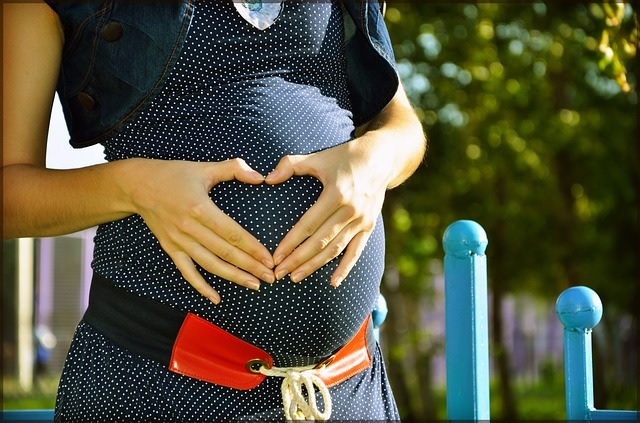
If you've recently become pregnant, you're probably wondering what's in store for you over the next 9 months!
To make sure you have all the details you'll need throughout your pregnancy, we've made a week-by-week list of all the most common pregnancy symptoms. Please note that every pregnancy is different, and some people may experience certain symptoms earlier or later than others (if at all), so please don't worry if your own pregnancy doesn't perfectly match the list below.
5 Weeks Pregnant
This is a very common time for women to find out that they are pregnant. This is a very early stage, so don't be surprised if you aren't experiencing any pregnancy symptoms just yet.
However, you may experience:
- Fatigue - Your body is embarking on a journey that requires a lot of energy, so even at 5 weeks, you may develop a sudden fondness for naps.
- Frequent Urination - At 5 weeks, your kidneys are beginning to expand, so you might find yourself making more trips to the loo than usual!
7 Weeks Pregnant
You're almost two months in, and it's probably starting to feel a little more real. That being said, it's not unusual to have few (if any) symptoms at 7 weeks - remember, it's still relatively early in your pregnancy.
Some people experience the following symptoms around the 7-week mark:
- Acne - Your hormones are all over the place right now, so breakouts are completely normal. Just make sure you check with your doctor before using any skin treatments to combat your spots.
- Cravings - Are you craving foods that you wouldn't normally eat? Or perhaps an old favourite seems strangely unappealing all of a sudden? This is a normal pregnancy symptom, which usually comes paired with morning sickness. Speaking of which...
- Nausea - The dreaded morning sickness! In spite of its common name, the feeling of nausea can sadly strike at any time of day. You may experience just a touch of nausea, or you may actually vomit - in either case, this is a common side effect of pregnancy at around 7 weeks and probably isn't anything to worry about.
9 Weeks Pregnant
After nine or ten weeks, you'll probably have experienced most of the pregnancy symptoms that tend to strike during the first trimester. In addition to the symptoms listed above, you may now notice:
- Headaches - Your hormones are still surging, and this can lead to headaches (which can also be brought on by hunger, dehydration and exhaustion - so make sure you're getting plenty of food, water and rest).
- Nasal Congestion - This is perhaps one of pregnancy's lesser-known side effects. By this stage, you may well notice an increase in your body's mucus production.
- Breast Tenderness - Your body is prepping for breast feeding and blood flow to this area is increasing, often leading to breast tenderness.
12 Weeks Pregnant
Week twelve is the final week of your first trimester. Your baby has now grown from a tiny cluster of cells into a foetus, and your uterus will be starting to expand beyond your pelvic bones. In addition to all of the symptoms we've already discussed, you may now be experiencing:
- Dizzy Spells - Those pesky hormones - particularly when coupled with changes in blood pressure - may cause you to feel dizzy. Make sure you sit down or rest during dizzy spells, and always eat/drink regularly to keep your energy up!
- Pelvic Pain - As your uterus expands, you may experience some aches and pains. It is best to avoid any heavy exercise and be thoughtful about how you position yourself - you don't want to put any unnecessary stress on sensitive regions.
From Here on Out...
As you head into your second trimester, your pregnancy symptoms should become less erratic. Now you can look forward to your bump getting bigger and the baby starting to kick. You will probably continue to experience some aches and pains, and you should continue to go for regular check-ups to make sure that you and your baby-to-be are both healthy.
Here are a few milestone moments to look out for later in your pregnancy journey:
- 13-15 Weeks Pregnant: This is generally the point at which you'll need to purchase maternity clothes. Of course, you may want to buy it earlier just for the comfort it provides!
- 20-25 Weeks Pregnant: It's around this time that you'll start to feel your baby kicking. Again, every pregnancy is different, so don't worry too much if you have to wait a bit longer.
- Approaching Due Date: Few women actually give birth on their exact due date. Nonetheless, it's an important date, and its passing signifies that your new baby will be with you very soon!
If you're 8-13 weeks pregnant, why not book an earlyAssure™ scan with First Encounters? We also offer 3D/4D scans for when you're a little further along and you're ready to see what your little one looks like!
Our clinics are located in Bristol and Cardiff.
Image from pixabay.com
